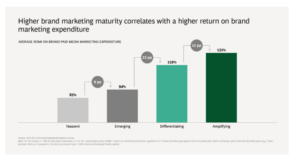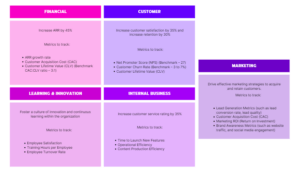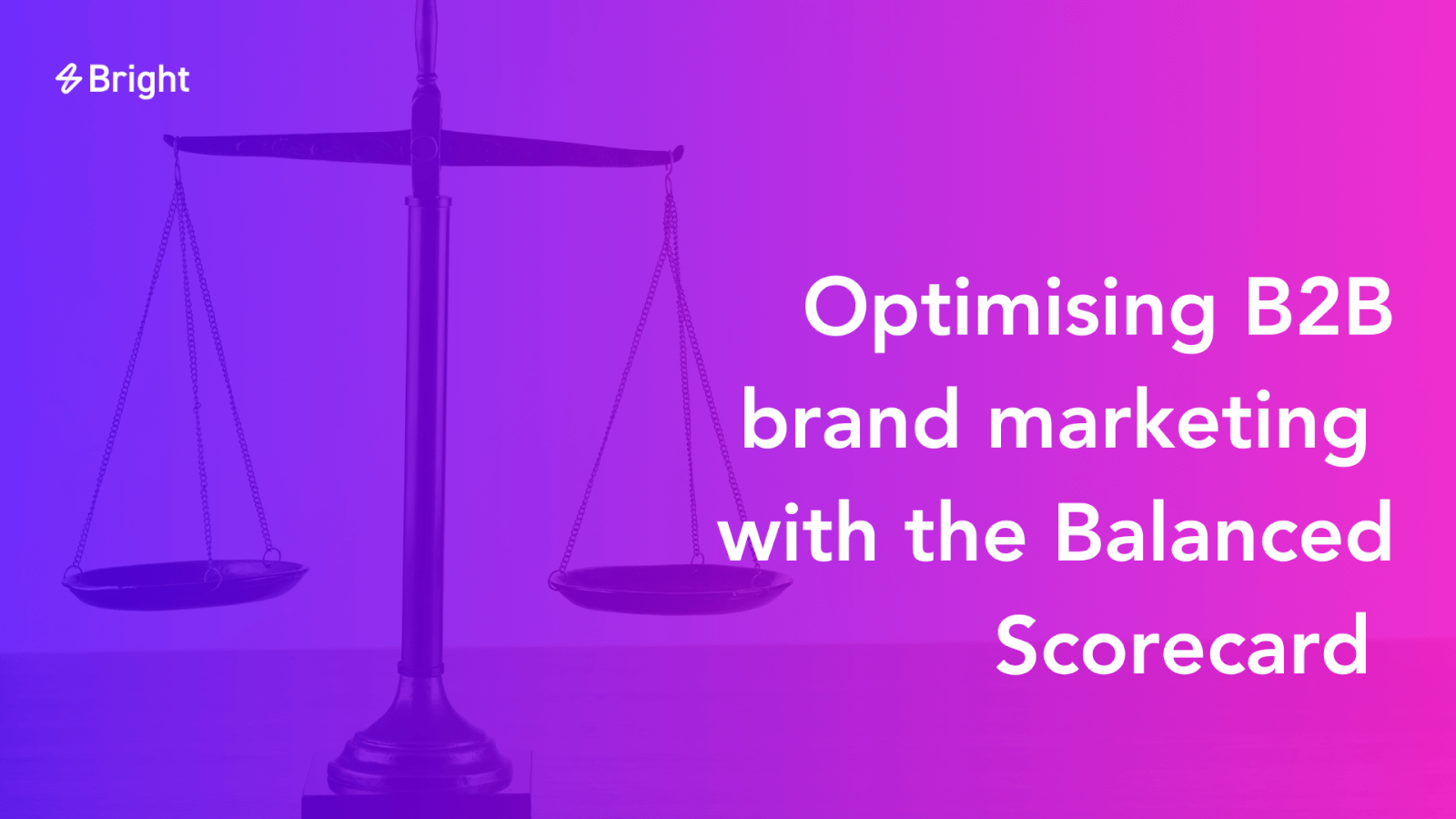Much debate continues in the B2B world around the value of brand marketing. While some organisations believe you should invest in it, the results are more challenging to quantify than demand generation campaigns, which deliver leads for products and services.
According to a study by BCG*, 99% of B2B marketers agree that trust in their brand is essential. Yet of the companies studied, 44% allocate less than a third of their budget to brand marketing. Reasons for low investment include key stakeholders not seeing the impact and the inability to measure the value.

*Source: 2021 BCG B2B Brand Marketing Study
However, in the same study, when companies were segmented based on their marketing and brand maturity, a correlation was found that indicates that increased marketing maturity leads to higher returns on brand marketing spend.

The bottom line is that B2B companies that underinvest in brand marketing or invest without a strategic plan are selling themselves short.
This leads us to the question of how can they develop their marketing maturity?
The main challenge the organisations face is looking at marketing spending from a long-term perspective. Creating a long-lasting impact in people’s minds is beyond logos and taglines; it’s about regular conversations with them, building trust and then delivering on their promise.
Brand marketing involves crafting a cohesive brand identity and messaging strategy to promote the brand through various channels like advertising, content marketing, and public relations. However, for the ecosystem to function effectively, brand marketing must be complemented by high-quality products/services and employee satisfaction. These elements contribute to positive brand experiences, fostering customer loyalty and advocacy. This holistic approach strengthens the brand’s reputation, enhances customer trust, and ultimately drives business success.
Regardless of the budget allocated, many organisations still grapple with prioritising short-term or incomplete metrics, leading to uncertainty about the true impact of their marketing efforts. As a result, they may question the effectiveness of their strategies or allocate resources ineffectively, hindering their ability to achieve desired outcomes.
To solve this, we recommend organisations look at the Balanced Scorecard. It provides a useful tool for translating strategy into measures to communicate a company’s vision. Harvard Business Ideas voted it the most influential idea ever presented.
The Balanced Scorecard.
Developed by Dr. Robert Kaplan of Harvard University and Dr. David Norton, the Balanced Scorecard revolutionised organisational performance measurement. Traditionally, companies focused solely on short-term financial metrics, but the Balanced Scorecard introduced non-financial strategic measures for a more holistic view. Kaplan and Norton’s approach, detailed in various publications, emphasises the importance of balancing financial indicators with measures of long-term success. They argue that while financial metrics reflect past performance, a comprehensive approach is needed to guide future value creation in the information age, prioritising investments in customers, suppliers, employees, processes, technology, and innovation.
It starts with four perspectives, i.e. financial, customer-centric, internal processes, and organisational capacity. It asks the organisations to define their goals across these aspects, plan a strategy to achieve them, and then determine the metrics to measure the success.
If your company also focuses on or values another perspective, it must be included in the scorecard.
It sounds simple and intuitive. However, the most critical aspect is establishing a relationship among all these. For example, you need to invest in your internal processes to deliver a quality product or service to your customers and enable you to achieve financial performance. This allows you to define your goals and plan your actions according to them, and then it’s essential to pick the metrics based on these goals and actions.
Let’s take an example of Company A and see how it can use the Balanced Scorecard to achieve its goals:

These metrics provide a comprehensive view of the SaaS provider’s performance. A strong financial performance, driven by ARR growth and healthy CLV, reflects effective marketing strategies in acquiring and retaining customers. Positive customer metrics, such as high NPS and CLV, demonstrate the brand’s ability to deliver value and build loyalty.
Efficient internal processes ensure that marketing efforts are optimised for maximum impact while investing in learning and growth opportunities for employees, which fosters innovation and keeps the brand competitive. Moreover, by monitoring marketing-specific metrics, the SaaS provider can gauge the effectiveness of marketing campaigns, optimise resource allocation, and enhance brand awareness and visibility in the market. This integrated approach ensures that marketing initiatives contribute to financial success and strengthen the brand’s reputation and market position over time.
In conclusion, as B2B companies navigate the evolving marketing landscape, embracing the Balanced Scorecard offers a strategic compass for long-term success, enabling them to build enduring brand value through consistent, trust-building conversations with their audience.

